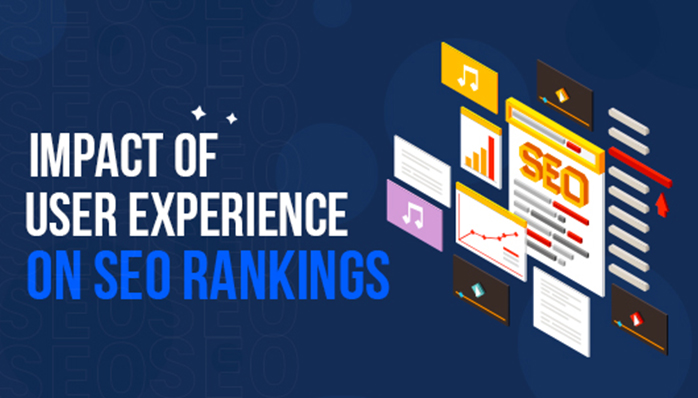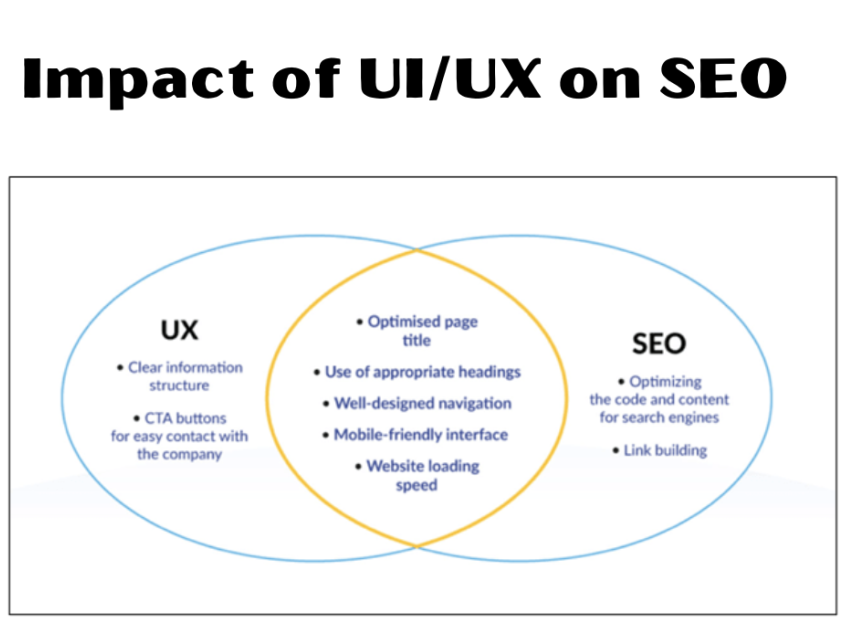Why User Experience Matters: Boosting SEO Through Website Design and Usability

User experience (UX) and SEO are essential for online success. SEO increases search engine visibility. While UX design concentrates on creating a satisfying user experience on websites. A full service SEO company UAE can help optimize both UX and SEO. This blog explores how user experience boosts SEO through website design and usability.
What is User Experience (UX) Design?
UX design refers to the process of designing a website or application to ensure that users have a positive and seamless interaction. This process involves a deep understanding of users’ needs, behaviors, and expectations, as well as making the website intuitive, easy to navigate, and visually appealing. Key elements of UX design include:
- Responsive Design: Ensure the website adapts seamlessly to various screen sizes and devices, providing an optimal user experience on desktops, tablets, and smartphones.
- Navigation: Implement clear and intuitive navigation menus, breadcrumbs, and search functionality to help users easily find the information they need.
- Page Load Speed: Optimize images, code, and server settings to minimize page load times, reducing bounce rates and improving user engagement.
- Aesthetics: Create a visually appealing design that aligns with the brand identity and target audience, using appropriate colors, fonts, and imagery.
- Content Structure: Organize content in a logical and accessible manner, using headings, subheadings, bullet points, and white space to enhance readability and comprehension.
- Accessibility: Design the website to be inclusive and usable by people with disabilities, following accessibility guidelines and providing alternative text for images and transcripts for audio/video content.
- Security: Implement security measures to protect user data and prevent hacking attempts, using SSL certificates, strong passwords, and regular backups.
- SEO: Optimize the website for search engines, using relevant keywords, meta descriptions, and header tags to improve visibility and organic traffic.
- Mobile-First Design: Prioritize the mobile experience, ensuring the website is designed and optimized for smaller screens and touch interactions.
- Call-to-Action (CTA): Include clear and compelling CTAs to guide users towards desired actions, such as signing up for a newsletter, making a purchase, or contacting the company.
- Social Media Integration: Integrate social media sharing buttons and feeds to encourage social engagement and expand the website’s reach.
- Analytics: Implement website analytics tools to track user behavior, measure performance, and identify areas for improvement.
- User Experience (UX): Focus on providing a positive and seamless user experience, considering factors such as ease of use, navigation, and overall satisfaction.
- Browser Compatibility: Test the website across different browsers and versions to ensure consistent display and functionality.
- Performance Optimization: Continuously monitor and optimize website performance to maintain fast load times and improve user experience.
- Content Management System (CMS): Use a CMS to simplify content updates and website maintenance, allowing non-technical users to manage the website’s content.
- Personalization: Tailor the website experience to individual users based on their preferences and behavior, providing relevant content and recommendations.
How UX Design Impacts SEO Success
The relationship between UX design and SEO is often underestimated, but it is a powerful synergy. SEO success relies on several ranking factors, many of which are directly influenced by the quality of the user experience.
Let’s explore further into how UX design can affect your website’s performance on search engines.
1. Improved Page Load Speed
Website speed is one of the most important factors in both SEO and UX design. Search engines like Google prioritize websites that load quickly because they offer a better experience for users. Slow-loading pages lead to higher bounce rates and reduced engagement, both of which can negatively affect your SEO rankings.
A website with fast page load times provides users with a seamless experience, encouraging them to stay longer and explore more. Google has made it clear that page speed is a ranking factor, and websites with faster load times are more likely to rank higher in search results.
How to Improve Page Load Speed:
- Optimize images and multimedia files for faster loading.
- Use a Content Delivery Network (CDN) to distribute content across various locations.
- Minimize JavaScript and CSS files to reduce page size.
- Choose a reliable hosting provider with good server performance.
2. Mobile-Friendliness and Responsive Design
Having a mobile-friendly website is crucial for both user experience and SEO, especially in today’s world where smartphones and tablets are prevalent. Google utilizes mobile-first indexing, which means that the mobile version of your website is primarily considered when determining search rankings. If your website isn’t responsive, users on mobile devices will have difficulty navigating, leading to a poor user experience and high bounce rates.
To improve both UX and SEO performance, businesses should incorporate responsive design into their websites. Responsive design ensures that the website adjusts seamlessly to various screen sizes. This, in turn, enhances user engagement by reducing bounce rates and increasing time spent on site.
3. Intuitive Navigation
Clear and intuitive website navigation enhances website usability and plays a significant role in SEO. When visitors can easily find what they’re looking for, they are more likely to stay on the site longer and engage with multiple pages. Additionally, search engines value websites that are easy to crawl and index. Well-organized content, internal linking, and a clear site structure help both users and search engines navigate your website effectively.
A good navigation system ensures that important pages are accessible. This helps distribute link equity throughout your site. This makes it easier for search engines to understand the hierarchy and relevance of your content. This improves your chances of ranking for targeted keywords.
Tips for Improving Website Navigation:
- Use a simple, easy-to-understand menu structure.
- Ensure that key pages are accessible within a few clicks.
- To enhance user orientation implement breadcrumb navigation.
- Add internal links to relevant pages within your content.
4. Lower Bounce Rates
Search engines track a key metric called bounce rate. Bounce rate measures the percentage of visitors who leave a website after viewing only one page. High bounce rates can signal to search engines that users are not finding what they are looking for. This can negatively impact your website’s search engine rankings.
You can reduce the bounce rates on your webpage by designing a website that is user-friendly, interesting, and educational. A well-designed user experience (UX) makes sure that users find your website interesting and helpful, which encourages them to remain longer and browse more pages. By telling search engines that your website offers users value, this in turn increases your SEO success.
5. Quality Content and Readability
Content is a vital aspect of both SEO and UX design. For a website to rank well on search engines, it must feature high-quality, relevant content that answers users’ queries. However, even the best content will fail to resonate with users if it’s difficult to read or navigate.
Clear and visually appealing presentation of content is mostly dependent on UX design. A good user experience is influenced by well-structured paragraphs, appropriate use of headings and subheadings, and good typography. Users are more likely to remain on a page longer when the content is easy for them to read and comprehend. In the end, this improves SEO.
Content Tips for Improving UX and SEO:
- Use short paragraphs, bullet points, and subheadings for easier reading.
- Include multimedia like images and videos to support and enhance the content.
- Optimize content for relevant keywords, but avoid keyword stuffing.
- Focus on providing value to the user through well-researched and informative content.
Website Usability: The Cornerstone of SEO and UX
Website usability refers to how easy and intuitive a website is for users to navigate and interact with. It includes elements like the site’s functioning, layout, and design, all of which have an effect on SEO and user experience. A well-designed website will improve conversions, maintain user engagement, and raise search engine results..
Key Aspects of Website Usability:
1. Clear Call-to-Action (CTA):
A well-placed and clear CTA encourages users to take the next step, whether it’s signing up for a newsletter, making a purchase, or downloading a resource. A seamless flow from one page to the next creates a better experience and increases conversions.
2. Accessibility:
Ensuring that your website is accessible to all users is a vital part of website usability. This includes users with disabilities. Search engines prefer accessible websites. Providing features like alt text for images, easy font readability, and keyboard navigation can improve both user experience and SEO.

4. Visual Hierarchy:
The way information is arranged visually on a page impacts how users engage with it. A clear visual hierarchy guides users through the content and ensures they can quickly identify important information.
Conclusion: Combining UX Design and SEO for Ultimate Success
In today’s digital age, the relationship between UX design, website usability, and SEO success is undeniable. By focusing on creating a website that is easy to navigate, mobile-friendly, fast, and user-centered, businesses can not only improve their user experience but also enhance their SEO performance. Advanced SEO strategies in Dubai play a crucial role in helping businesses achieve these goals by optimizing both the technical and user experience aspects of their websites.
When SEO and UX design are aligned, your website becomes more than just a tool for ranking high in search engine results. It transforms into an engaging platform. It also transforms into a functional platform. It also transforms into an enjoyable platform. This platform attracts visitors. This platform retains visitors. This platform converts visitors. To achieve long-term success, businesses should work with professional SEO services. These SEO services understand the importance of user experience in driving SEO results. By combining effective UX design with a strong SEO strategy, companies can maximize their online presence. Companies can also ensure that visitors enjoy an optimal experience while browsing their websites.

